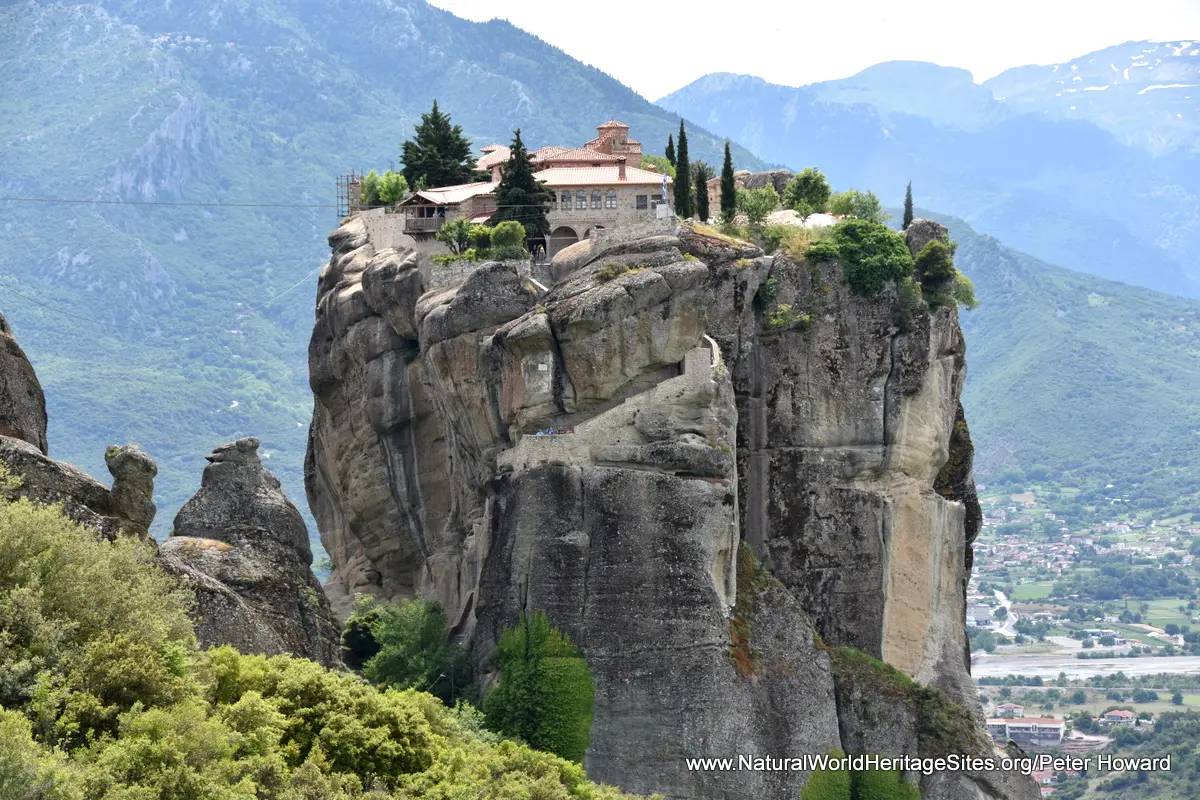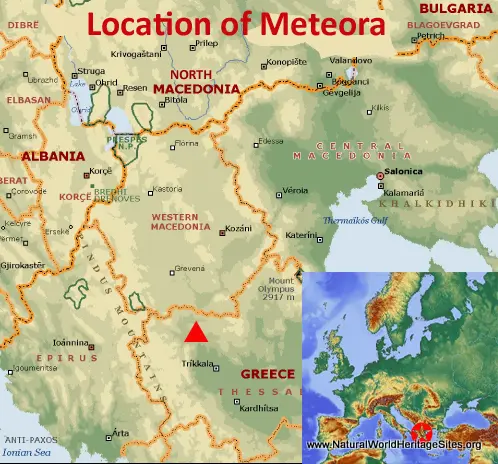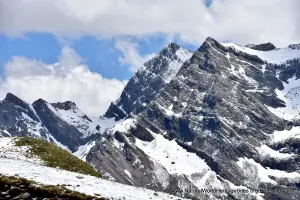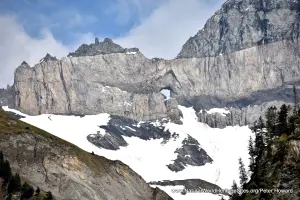EXPLORE Meteora with this slideshow, check the location map and get all the facts and information below.
For slideshow description see right or scroll down (mobile). Click to view slideshow
Location and Values: Meteora is a ‘mixed’ site located in north-central Greece where a number of spectacular ancient monasteries are perched on seemingly inaccessible pinnacles of rock. Meteora means literally ‘rocks in the air’, and it is perhaps not surprising that this awe-inspiring place should become a religious centre. The massive sandstone cliffs, towers, pinnacles and domes that provide the natural setting for monastic life are the product of coastal erosion by a prehistoric sea that covered the plain of Thessaly 30 million years ago. The earliest religious communities appeared in the late tenth century when groups of hermits made their homes in some of the natural rock caves, but it was not until the sixteenth century that Meteora reached its zenith, with 24 monasteries and hermitages established. The 16th-century frescoes and other religious art are of particular significance in the development of post-Byzantine painting. Today, six of the monasteries are still occupied, and an unusual (seventh) one, clinging to the side of a cliff, has been restored and can be visited.
Conservation Status and Threats. According to IUCN’s most recent Conservation Outlook Assessment (December 2020) the conservation status of Meteora is ‘good with some concerns’. The exceptional values which are recognized by the inscription of Meteora on the World Heritage List are not seriously threatened, but a number of issues affecting the site’s conservation are noteworthy, including:
- Inappropriate land-use practices. The natural resources of Meteora are subject to heavy use by local communities and there are problems arising from over-grazing by goats and other domestic livestock, poor forestry practices, land-use changes, habitat degradation and use of poison baits.
- Tourism pressures. Meteora receives vast numbers of visitors, resulting in over-crowding, traffic congestion, inappropriate infrastructure development, as well as a certain amount of erosion and degradation of trails and vegetation in some heavily-used areas.
- Management shortcomings. The IUCN report highlights the need for better monitoring of the condition of the site’s natural attributes and the threats to these attributes. Management of natural resources at Meteora needs to be improved, and the establishment of an authority to ensure that the area’s cultural and natural attributes are managed in an integrated, holistic manner would be helpful. The outdated Natura 2000 management plan for Meteora needs to be revised and implemented.
Links:
Google Earth
UNESCO Official Website
IUCN Conservation Outlook
UNEP-WCMC Site Description
Birdlife IBA
Slideshow description
The slideshow ‘tells the story’ of Meteora with a portfolio of photos by Peter Howard from a visit in May 2019. They illustrate the spectacular landscape features of this outstanding place and each of the seven monasteries, together with some of the livelihood activities that are an integral part of the natural landscape – grazing sheep, vine cultivation and beekeeping. The slideshow concludes with a series of photos showing the (relatively long) walk along the cliff-tops through forest and grassland to the outlying monastery of Ipapandi. This recommended walk provides an appreciation of the natural environment of Meteora, away from the crowds that throng the central monasteries. Ipapandi itself is a small monastery built into a cave half way up a cliff, in a most dramatic setting and quite distinct from the other six monasteries.
Factfile
Website Categories: Earth Features;
Area: 272 km2
Inscribed: 1988
Criteria:
- Exceptional natural phenomenon (vii);
- Outstanding natural beauty (vii);
- Cultural criteria (i,ii,iv,v)





